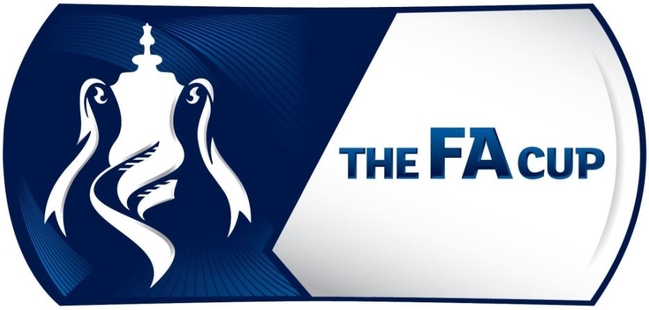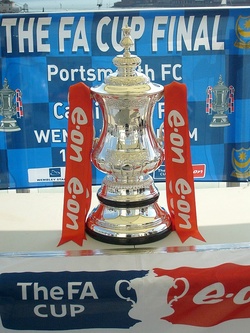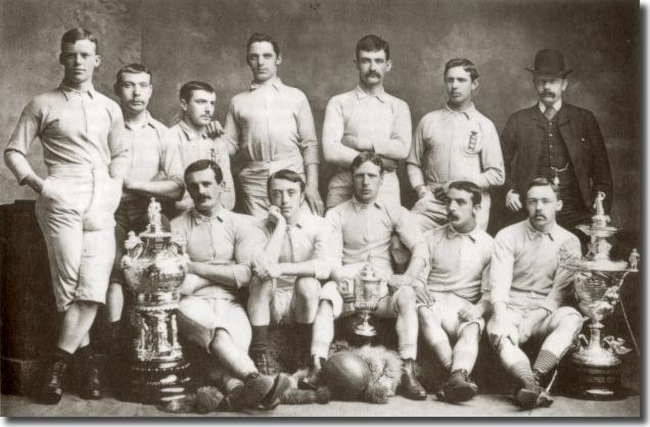The FA Cup is commonly known as the “Greatest Cup Competition in the World”, and we couldn’t agree more. It carries far more prestige than the League Cup, although both winners qualify for the Europa League.
Here we bring you some information, statistics, and betting advice that might just help you pick the winner of this year’s FA Cup. So read on and see if you can find something to help stack the betting odds in your favour.
FA Cup Explained
The FA Cup is widely accepted as the best club knockout competition in world football and is the envy of other countries whose own versions of the tournament are not taken as seriously or played with as much passion.One of the special attributes of the FA Cup is that every single team in England – whether professional, semi-professional or amateur – has the right to enter, all the way down to the bottom of the English football pyramid. For a non-league team to make it through to the third round, when Premier League and Championship teams are introduced, really encapsulates why the competition is so special – it can result in some very rare fixtures indeed.
In recent years, there have been concerns that the big clubs, too often preoccupied with vying for honours in Europe and in the Premier League, are not taking the FA Cup as seriously as they should. However, it has to be remembered that the big clubs are still hugely dominant. Since 2009, Chelsea have won four FA Cups, Arsenal have won three and the Manchester clubs have won 3 between them. The only real surprise came in 2012-13 when Wigan beat Man City in the final, but even they were in the Premier League at the time.
However seriously or not certain teams take the competition, to win the FA Cup is still one of the top honours in the English game.
Betting on the FA Cup
One of the best things about the FA Cup is that almost every match in the competition has the potential for a big upset, and with big upsets come very nice betting odds. Trying to pick out the matches in which such an upset is likely to occur is not always an easy task but in general, you can bet your bottom dollar that a struggling Premier League side who has been drawn away to a lower league side on a good run has a decent chance of stumbling.
Having said that, who would have predicted that League One side Bradford City would go to Premier League leaders Chelsea and win 3-2 in the 2014-15 season? We sure wish we’d put money on that.
When betting on the underdog you have numerous options available from simply backing them to win to opting for the “draw no bet”, or perhaps taking them with a +0.5 or even +1.5 goal advantage in the Asian handicap market. If a Premier League side is expected to win comfortably, there is often value in backing against that big win using the handicaps, thus you’ll be in the money whether there is a narrow victory for the favourite, a draw, or a shock result.
Overall though, nothing quite beats seeing the underdog triumph when you’ve bet on them to do so, so for us, FA Cup betting is all about trying to ascertain which sides are most likely to upset the odds. As mentioned, recent league form is an obvious indicator, but so is the likelihood of players from the top flight side being rested. Some managers have a reputation for playing untested youth players in the cup while others will take it more seriously.
Factor in other variables such as injuries, whether the manager of the underdogs has a history of cupsets, and whether there are players who’ve made a habit of scoring in the cup, and with a little luck you could soon be profiting from some FA Cup giant killing.
A Brief History of the FA Cup
The FA Cup is the oldest football competition in the world. It was first played in the 1871-72 season and is responsible for some of the greatest moments in the history of our great, great game.
The 1953 final, known as the “Matthews Final”, is one of the most famous in the history of the competition purely because of the genius of Stanley Matthews. The English winger inspired his side, Blackpool, to come back from 3-1 down against Bolton Wanderers to win the game 4-3; the game also featured a hat-trick but not from Matthews, from Blackpool striker Stan Mortensen. The game proved so popular on both TV and radio that the final has always had its own slot on both formats from thereon in.
The most historic element of the FA Cup is the classic big upset; the “cupset”. There have been a number of such occurrences over the years, some of which are certainly worthy of note.
Arguably the most famous cup upset comes from 1972 when Hereford United, a non-league side, beat Newcastle United, who were in the top flight, 2-1 in a third round replay. Ronnie Radford’s stunning winner from 30 yards is the iconic moment from the game and it set a trend for years to come of brilliant upsets, giving confidence to smaller sides.
Another example of a non-league side beating top-flight opposition was in the 1988-1989 campaign when Sutton United beat Coventry City. It was the last example of such an unlikely victory until Luton Town beat Norwich City in 2013.
Other examples of “FA Cup romance” come from 2008 when Havant and Waterlooville gave Liverpool a scare at Anfield before eventually going down 5-2, and then Barnsley beat the Reds and Chelsea next to reach the semi-final at Wembley.
FA Cup Stats and Facts
Previous Winners

Credit: Joshjdss Flickr
The most prolific winners in the history of the FA Cup with 13 competition wins are Arsenal, one ahead of Manchester United. That success has largely come in the modern era, as over the last 20 or so years bigger clubs have dominated the competition. The two aforementioned clubs are also head and shoulders above the rest when it comes to the most appearances in the final with 20 apiece.
A club called Wanderers (who existed from 1859 to 1887 but were reformed in 2009) join Blackburn Rovers, Arsenal and Tottenham Hotspur as clubs who have won consecutive FA Cups on more than one occasion.
Most Final Defeats
Everton hold the current record for having lost the most finals. They have lost on eight separate occasions, firstly in 1893 and most recently in 2009 to Chelsea. That 2009 final was also the game in which Louis Saha scored the fastest ever FA Cup goal.
Highest Scoring Games
In terms of individual matches from the 20th century onwards, the top 5 are as follows:
| Year | Round | Fixture | Result |
|---|---|---|---|
| 1960 | 4th Round | Tottenham Hotspur v Crewe Alexandra | 13-2 |
| 1926 | Last 16 | Man City v Crystal Palace | 11-4 |
| 1995 | 1st Round | Shrewsbury Town v Marine AFC | 11-2 |
| 1996 | 1st Round | Hull City v Whitby Town | 8-4 |
| 1995 | 2nd Round | Walsall FC v Torquay Utd | 8-4 |
The highest scoring tie, however, was between Dulwich Hamlet and St Albans City in a fourth qualifying round match in 1922. The first game finished 7-7 and the replay was then won 8-7 by Dulwich Hamlet so that 29 goals were scored in total between them.
The biggest win of all time belongs to Preston North End who beat Hyde United 26-0 in 1887. Ouch.
Most Individual Wins/Goals

Credit: Ben Sutherland Flickr
Ashley Cole has won the competition an unprecedented seven times, three with Arsenal and four with Chelsea, although since he is now retired that record is up for grabs.
The 19 goals scored by Jimmy Ross for Preston North End in the 1887-88 campaign is the highest from any player in one season in the competition while Ted MacDougall scored a record-breaking nine goals in one FA Cup game for Bournemouth in 1971.
Longest Tie
Before a significant rule change, FA Cup ties were never resolved by extra time and penalties but by replays… as many as were needed! The longest tie lasted six games and 660 minutes, between Oxford City and Alvechurch in the 1972 fourth qualifying round.
Who Plays in the FA Cup?
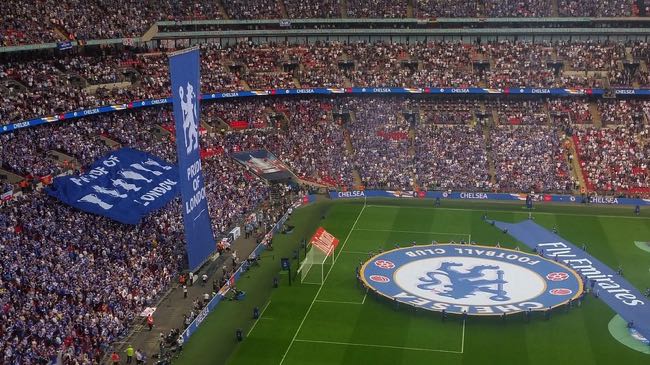
Credit: sarflondondunc Flickr
The FA Cup is routinely billed as the greatest football club tournament in the world. Part of the reason for that is the fact that, probably more than any other football contest, it serves up the possibility of romance and magic, in the shape of huge upsets and archetypal David versus Goliath matches. This is due to the structure and format of the FA Cup and the way that it features some of the very best teams in the world but also permits entry to sides who are several promotions short of the semi-professional game, let alone professional.
Premier League
Over 700 teams typically play in the tournament each year, and given there are just 20 sides in the Premier League, clearly a huge number of non-elite teams take part. In addition to the PL sides, there are the 72 members of the English Football League: 24 from the Championship, plus 24 each from League One and League Two.
Levels 1, 2, 3 & 4
These are technically referred to as Levels 1, 2, 3 and 4 in terms of the overall football pyramid, the Premier League being Level 1. Beyond that we have what is referred to as “non-league football”, the highest level of which is Level 5. This, for fans of a certain age, may still be known as the Conference, and is the highest level of football in what is formally the National League System (NLS). The NLS, or non-league football, consists of six levels (called Steps) of football beneath the English Football League and is administered by the Football Association (FA).
National League
“The Conference” has actually been called the National League for a good number of years now and, at the time of writing, it is called the Vanarama National League for sponsorship reasons. The FA Cup is open to teams from the National League, who enter the tournament in the final round of qualifying, prior to the first round (proper). We will explain more about the qualifying rounds when we look at the format and dates of the FA Cup shortly.
Levels 6, 7, 8 & 9
Prior to that sides from Levels 6, 7, 8 and 9 take part in earlier qualifying rounds. In the very first stage of the competition, the extra preliminary round, it is also possible for teams from Level 10 to take part, should places be available. To give you a better idea of what that means in real terms, Level 5 is the National League, as said, and is Step 1 of the NLS, whilst Level 6 (Step 2) is made up of the National League North and South.
Level 7/Step 3 is made up of four leagues, including the Isthmian League, whilst moving down another step we have eight further leagues. Beneath this things get rather more complex, with the lower reaches of the NLS made up of a large number of local and regional counties leagues. Here you will see such luminaries as Mousehole, Pontefract Collieries, Redcar Athletic, Bugbrooke St Michaels and Saffron Walden Town, sides that all enter the FA Cup Extra preliminary round.
Format of the FA Cup
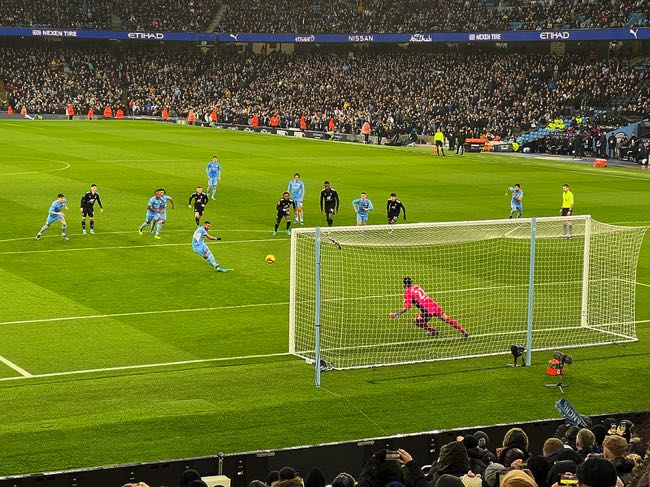
Credit: Damien Walmsley Flickr
Most football fans will be familiar with how the FA Cup works from the third round onwards, when the big boys enter. However, let us now take a look at the competition from the very beginning. We have already given some of the basics above but we will now look in more detail at how the competition progresses and what a side needs to do in order to go all the way.
Single-Elimination Tournament
It is a single-elimination tournament, meaning that if a side loses they are out, with no league format, no two-legged ties and no second chances. What we are describing here is the entire FA Cup, incuding the qualifying rounds. You may see some discuss the FA Cup as only including 124 teams but to begin the story only at the first round (proper) is to miss so much of the cup’s magic.
Over 700 Clubs Take Part
In total. over 700 clubs usually play in the FA Cup each year and the majority of those are sides most fans have never heard of. The precise number can vary but, for example, in the 2022/23 competition 732 teams featured. The qualifying rounds saw 640 teams, from the fifth tier down to the 10th, competing for just 32 places in the first round (proper) alongside the 92 EFL and Premier League teams.
Preliminary Round
Teams are gradually filtered into the competition according to where they lie in the English football pyramid. The extra preliminary round sees a small number of the highest-ranked Level 10 sides compete against those from Level 9 and some of the lowest-ranked Level 8 outfits. As with many of the earlier rounds of the FA Cup, geographical factors are taken into account for the draw to minimise travel for these small clubs.
What Happens in a Draw
How games that end level after 90 minutes are settled has changed numerous times over the years and also varies according to the stage of the competition. Due to the global health issues of recent years, we have seen additional changes, some of which may or may not prove to be temporary. These were introduced to reduce travel and social contact, and also to help players who were potentially having to squeeze fixtures into a smaller timeframe due to congestion caused by the global health disruption.
However, football, especially at the top level, is being played at a faster and faster pace, and extra fixtures are being added to an already squeezed calendar. Given this, and the perceived low value of the FA Cup to the top clubs, relatively speaking, discussions continue about how to reduce its impact on their schedule. As such, rather than provide exact details here we will speak in more general terms.
Most stages of the competition still use replays should a game be level after 90 minutes. This is currently the case for all games prior to the fifth round. If the replay, played at the venue of the side who were away for the first game, ends level, the match goes to extra time and then penalties if needed.
From the fifth round onwards games will not go to a replay, instead using extra time and penalties to ensure a result on the day. All matches throughout the entire competition, as far as the semi finals, are played at the venue of the team drawn first. Both semi finals are played at Wembley, as is the final, though over the years various venues have hosted the FA Cup final.
FA Cup Calendar
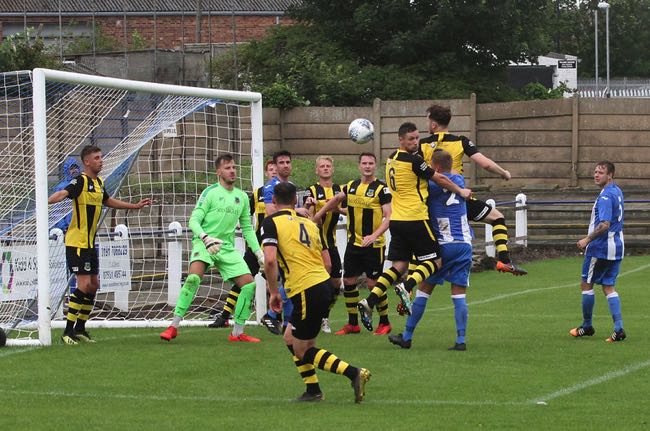
Credit: Whitley Bay FC Flickr
The exact dates of the FA Cup change from year to year. Over the past few seasons we have seen some more dramatic alterations for the aforementioned reasons and also to accommodate the winter World Cup in 2022. However, events in Qatar did not have a huge impact, especially on the later stages and so the information below is based on the 2022/23 FA Cup but can be used as a more general guide too. Note that the dates for the round are the main date, with fixtures usually taking place a day or so either side.
- Application Dates – End of February to Early April
- Extra Preliminary Round (Levels 8, 9 and 10 join) – Early August
- Preliminary Round (Level 8 joins in full) – Mid to Late August
- First Qualifying Round (Level 7 teams enter) – Early September
- Second Qualifying Round (Level 6 teams enter) – Mid September
- Third Qualifying Round – Early October
- Fourth Qualifying Round (Level 5 teams enter) – Mid October
- 1st Round (League 2 and 1 teams enter) – Early November
- 2nd Round – Late November
- 3rd Round (Championship and Premier League teams join competition) – Early January
- 4th Round – Late January
- 5th Round – Early March
- Quarter Finals – Mid March
- Semi Finals – Mid to Late April
- Final – Mid to Late May
As you can see, the third round is the last time any new teams are added, the 44 teams from English football’s top two tiers being added to the 20 winners from the previous round. From here is a straightforward knockout and, as with earlier rounds, the draw for the next round typically takes place after the previous round of games has finished. The final is then usually held in the middle of May or sometimes towards the end of the month.
What Does a Side Get for Winning the FA Cup?
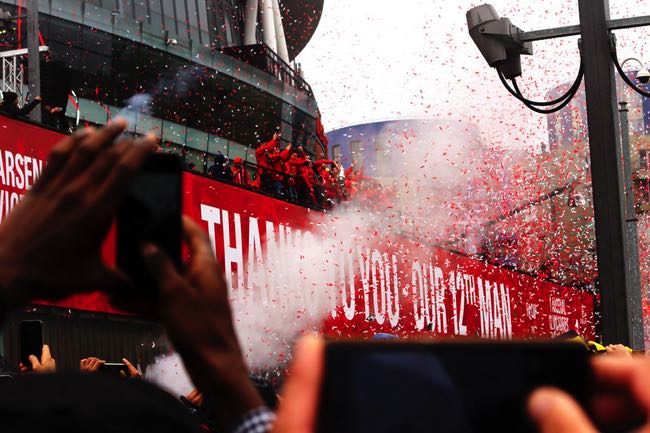
Credit: sarflondondunc Flickr
The reward for a team winning the FA Cup is multi-faceted. Of course, glory, honour, success and silverware are the most important things. However, in addition to those, clubs receive substantial prize money. This works on a round-by-round basis, with cash going to both the losing and the winning side, the latter usually get around three times as much, in addition to further guaranteed prize money in the next round.
Prize Money
As an example, the loser in the extra preliminary round receives £375 and the winner £1,125. The victor is then guaranteed at least £481 in the next round and £1,444 if they can win that too. This jumps to £9,375 for a win in the fourth qualifying round which is a substantial amount for many of these smaller clubs.
Of course, a club that wins the competition is looking at a far bigger reward, with a Premier League side (entering at the third round) set to win a total of just under £4m in prize money for going all the way in 2022/23. Over half of that comes from winning the final itself, the loser getting £1m versus £2m for the victor. In addition to prize money, clubs will get gate receipts from match days, plus potentially lucrative television fees if they appear live.
Qualification for the Europa League
Last, but certainly not least, and in fact probably worth more than the prize and TV money, whichever side wins the FA Cup also qualifies for the following season’s Europa League. If the winner, as is often the case, has qualified for the Champions League or Europa League through the PL campaign, an additional Europa League place is granted to the Premier League.

